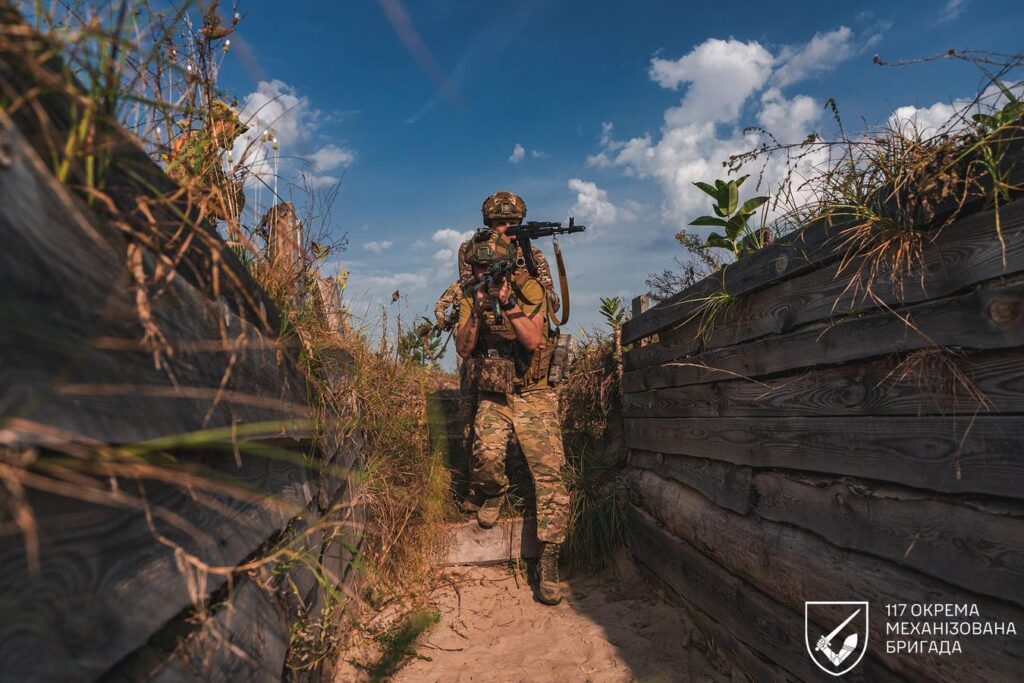Ukrainian 117th Heavy Mechanized Brigade troops in training.
117th Heavy Mechanized Brigade photo
Every once in a while, Russia’s motorcycle assault tactics work—and help Russian regiments nudge the front line in eastern Ukraine a mile or so to the west.
There’s a line of Ukrainian fortifications stretching from the fortress city of Pokrovsk to the ruins of Toretsk, 30 miles to the northeast. Capturing Pokrovsk—a major obstacle to wider Russian advances in Donetsk Oblast—is arguably the Kremlin’s top priority in its 39-month wider war on Ukraine.
A pair of Russian field armies, each with 10,000 or more troops, spent most of last year slowly marching toward Pokrovsk from the devastated city of Avdiivka, 25 miles to the southeast, but stalled a few miles outside Pokrovsk as Ukrainian resistance stiffened—and Ukrainian drones strangled the supply lines trailing behind the advancing Russian armies.
So now the Russians are trying to surround Pokrovsk instead of directly attacking it. In recent days, Russian assault groups have stormed a line of Ukrainian trenches threading along the T-0504 highway connecting Pokrovsk and the city of Kostyantynivka, north of Toretsk.
Crossing the trenchline is a necessary first step if the Russians are going to encircle Pokrovsk. At great cost, they’re making some progress—and their motorcycle troops are leading the way.
Probing with small reconnaissance groups, many of them on bikes, the Russians ran into stiff defenses manned by the Ukrainian 14th National Guard Brigade, 38th Marine Brigade and 117th Heavy Mechanized Brigade. Attempting a larger assault on April 17, the Russians lost 21 armored vehicles and as many as 240 troops.
Damage in Pokrovsk.
The Ghost Blogging Fund photo
Exploiting a gap
In recent days, one Russian unit—the 39th Motor Rifle Brigade—finally found a weak point in the Ukrainian line: a stretch of exposed trenchline outside the village of Malynivka lacking any tree cover. Russian drones struck some of the armored vehicles shuttling Ukrainian troops to the trench, and over the weekend, captured a segment of the trench. A Ukrainian counterattack failed when drones struck the attacking infantry.
Advancing up to a mile in a month or so and seizing a lodgment in the Ukrainian defenses surrounding Pokrovsk, the Russians are now in a position to exploit this gain. If they can surge more forces in the lodgment, they may be able to gain more ground—and put pressure on Pokrovsk’s eastern flank.
It’s an extremely risky effort. Most Russian motorcycle attacks fail, often at the cost of the majority of the troops and bikes involved. The follow-on attacks by Russia’s dwindling stock of armored vehicles are costly, too. Civilian bikes, cars, vans and trucks now make up 90 percent of Russian vehicle losses, but that doesn’t mean Russian regiments aren’t also losing dozens of tanks and fighting vehicles every week.
And daily troop casualties number around 1,000. That’s nearly as many troops as the Kremlin manages to recruit every day. Even a small increase in personnel losses would tip the Russian armed forces into a manpower deficit.
Read the full article here


